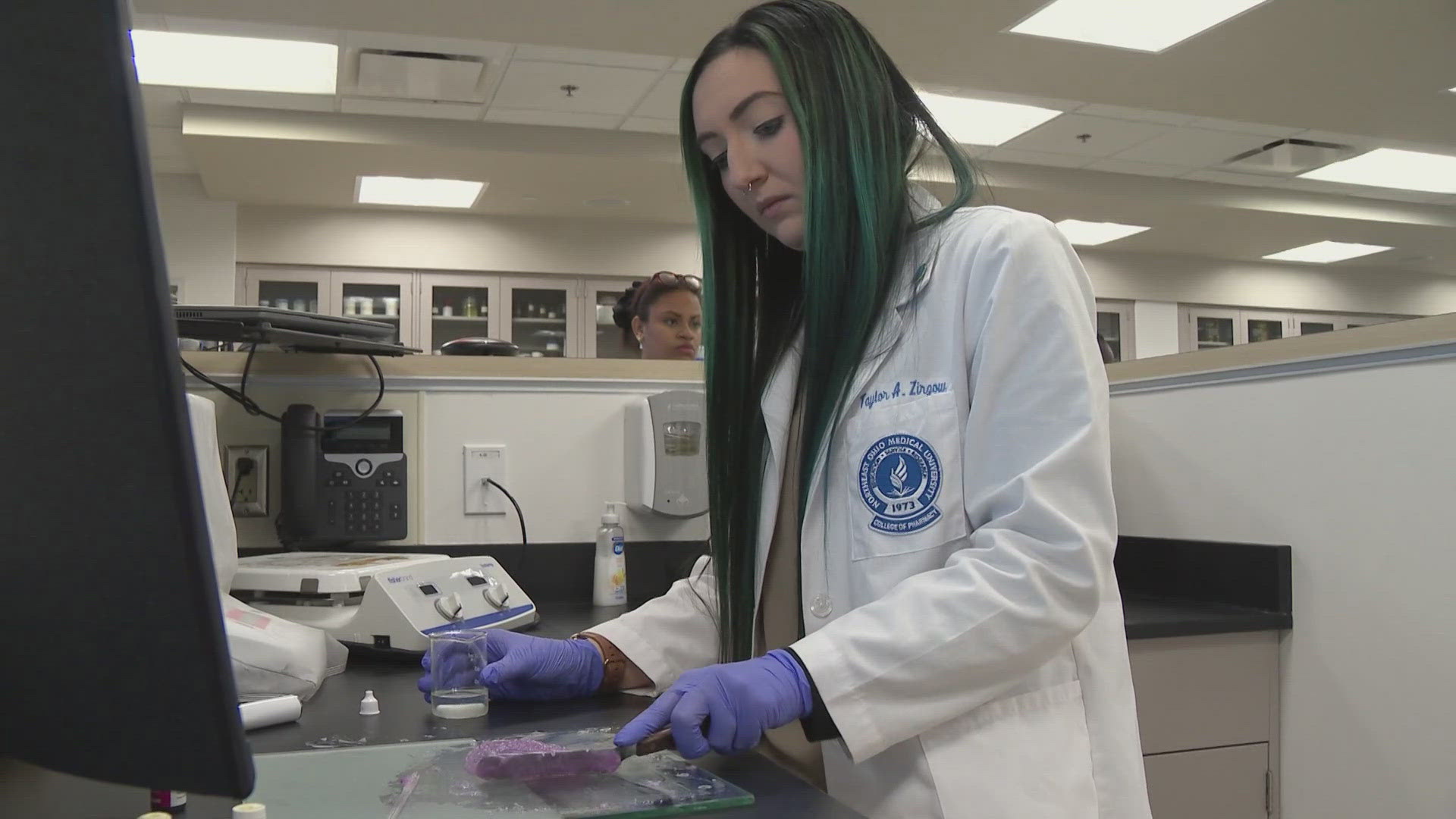ROOTSTOWN, Ohio — Third-year pharmacy student Tailyn Houston has no intention of working in a drug store after graduation.
"I'm still figuring it out, but I have a strong interest in infectious disease, solid organ transplant and neuro psych," she said.
She and her classmates have dozens of opportunities to choose from.
"They tell us there's over 100 different types of jobs, you can work in a hospital setting as a staff pharmacist checking orders, or you can be a clinical specialist such as working in cardio, solid organ transplant or infectious disease, anything that a doctor can specialize in, a pharmacist can specialize in," Houston said.
These student pharmacists are also witnessing the next generation of medicine develop.
"Since I've started school there's been a lot of development. The field of pharmacogenomics coming to the forefront where they test your genetics and see what medication would be right for you based on the results, so that's really helping with personalizing the medicine for each person," Houston said.
NEOMED College of Pharmacy is one of seven pharmacy schools in Ohio. Olivia King graduates this spring. Her dream job is an independent pharmacy with direct patient care.
"Hopefully pharmacists get provider status and be able to both prescribe and manage medications and then also dispense them to the patient right there. And if the patient needs help sorting them into pill packaging, then I would be there to do that. If a patient needed an injection, I would be there to do that," King said.
Pharmacists affiliated with the Ohio Medicaid program can enroll as recognized providers, to help support more than three million Ohioans.
The Ohio Department of Medicaid adopted the measure authorized by the Ohio General Assembly to expand access to value-added services in rural and other communities where limited access to medical care may exist.
It allows an enrolled pharmacist to manage medication therapy in collaboration with a prescribing medical professional; administer a wider range of immunizations, including childhood immunizations; and administer certain injectable medications as permitted by state law.
However, the do not have provider status for Medicare or commercial insurance. A pharmacist shortage may prompt a change.
"I think it's going to change because of all of the chains that are closing. Independents are closing left and right as well. So we're going to run into a pharmacy desert, where it's going to be hard for people to get their prescriptions, which is really, really sad," King said.
As of now, fewer pharmacists are entering the field.
"When we were at our peak for a number of pharmacists that were graduating each year, around 14 to 15,000. Right now we'll be graduating a class size of around 9,000," said NEOMED College of Pharmacy interim Dean, Katherine Tromp, PharmD.
Despite the chain stores closing, it's surprising for a field with so many other job opportunities and lucrative salaries.
"Because the money is very good an average salary is usually $120 to $130,000 right out of college," Tromp said.
And it's a career that can be started in high school.
"They really only need two years of prerequisite coursework before you start your PharmD program. So you can have your doctorate degree in six years out of high School," Tromp said.
A bachelors degree isn't required.

